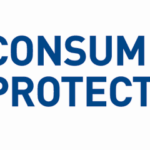Opinion: Drinking and driving; should Canada lower the limit?
How much alcohol should a person be allowed to have in her bloodstream while being in control of a motor vehicle? Is there a “safe” limit below which someone is not really impaired, or not too impaired? Canada’s Justice Minister, Jody Wilson-Raybould, is considering lowering the blood-alcohol content limit that constitutes a criminal offense from anything over .08 percent to anything over .05 percent. The current limit was set in 1969, and Wilson-Raybould says that at that time, the government estimated that the .08% limit would result in twice as many deaths as would occur from crashes if all drivers were sober. However, she says there is new research which demonstrates that it results in three times as many deaths, and that the number of deaths from impaired driving rises exponentially above .08 percent blood alcohol.
She cited the example of Ireland, which lowered its limit to .05 percent within the past ten years and, she says, did not suffer an increase in clogged courtrooms, a fear expressed by some , because the number of charges dropped by 65 percent.
The law in Canada:
Canada’s Criminal Code, Section 253(1)(a), states that it is an offence to operate a motor vehicle or vessel or to operate or assist in operating an aircraft or railway equipment, or to have “the care and control” of any of those things whether they are in motion or not, while one’s ability to operate it is impaired by alcohol or a drug. Section 253(2) makes it clear that this includes any combination of alcohol and drugs. Section 253(1)(b) makes it an offence to do those things with a blood alcohol level exceeding .08 percent ― that is, anything higher than eighty milligrams of alcohol in one hundred millilitres of blood. Of course, one can still be “impaired” with a lower level of blood alcohol.
The Canada Safety Council regards Canada’s drunk-driving laws as “among the strictest in the Western world.” It defends Canada’s limit of .08 percent, though it is higher than many other countries’ limits, by pointing out that our penalties are tougher than many. Its webpage on the topic includes this paragraph:
“To determine whether the 0.08 BAC in Canada ’s Criminal Code is in line with other countries, CSC commissioned a 2002 study comparing Canadian laws on blood alcohol levels when operating a motor vehicle to those of 77 jurisdictions, including 51 in the U.S. and eight in Australia . The study, updated in 2006, concluded that if we were simply to reduce the Criminal Code BAC to 0.05, Canada could have harsher penalties for blood alcohol offences than any other comparative country.”
The law in other countries:
Apart from those countries with a zero tolerance for driving after drinking enough to have any detectable blood alcohol level, and there are several including Hungary and Slovakia, our planet’s nations have a wide variety of laws on blood alcohol content.
Canada, the USA and Singapore share the .08 percent limit. Germany and Switzerland allow zero percent for drivers with a certain number of years of driving experience, and .05 percent for experienced drivers.
A partial list of countries with a .05 percent blood alcohol limit includes Austria, Portugal, The Netherlands, Ireland, Denmark, Finland, France, and Greece.
Toward the stricter end of the scale are countries with .02 percent limits, including Sweden, Poland and Norway. Sweden and Norway have both achieved a relatively low percentage of traffic deaths per million people; in Sweden, this is not entirely due to their low tolerance for drunk driving, but also to their attention to designing safer roadways and separating pedestrian and bicycle traffic from motor traffic. Poland, also with a .02 percent blood alcohol limit, has one of the higher rates of traffic fatalities, attributed in this article to speeding and drunk driving. Compliance and enforcement seem to be less effective there than in Sweden and Norway.
The USA (with its .08 percent limit) was included in a chart of traffic deaths per million inhabitants in European countries, and had the highest number of traffic deaths of any country included on the chart.
Why do people get blotto?
Is it because they have sorrows to drown? Because they have a genetic weakness for the stuff? Because our world seems to be on a collision course with something bad? Because it’s expected in certain social circles that to have a good time, one must be drunk, or at least a wee bit tipsy? Among the younger drinkers, is there peer pressure to guzzle booze, get raucous, vomit, pass out or otherwise behave stupidly? There’s some evidence that humans have been getting drunk and using other mind-inhibiting drugs since prehistoric times, and various other animals have also been observed getting drunk on fermented fruit and the like. See this video, for example:
https://www.youtube.com/watch?v=20YKV6bZ8bk
Like smoking, too much alcohol has known ill effects on health, even if one doesn’t die or become crippled in a car crash. Brain cells die. Liver damage occurs. Addiction to alcohol leads to alcoholism, and people can lose respect for drunkards. Drunks sometimes lose their jobs. Yet, people continue to drink to excess, and to normalize it or even glorify it.
Normalize sobriety instead?
Contrary to the myth of have-a-drink-and-you’ll-have-a-good-time, it’s pretty easy to let loose, enjoy the company of friends and be enjoyably uninhibited without any alcohol at all. We don’t have to be drunk or tipsy or tiddly, we don’t have to vomit or get woozy or pass out. People who have trouble stopping at one glass of wine might be better off not having any, and those who can’t pass up booze are definitely better off not driving.
So what about the legal limit?
It might help reduce drunk driving and associated deaths and disablements to reduce our blood alcohol limit to .05 percent, or it might not. Singapore also has a .08 percent limit, but a fairly low level of drunk driving fatalities ― while Poland, with its .02 percent limit, has a much higher rate of traffic deaths. Education, attitude, and enforcement seem to be key factors. Maybe we should focus on those things more, whether or not the legal limit changes from .08 to .05 percent.
At the same time, we’d better also concentrate on eliminating distracted driving, a euphemism for the stupid use of cell-phones and other such devices while at the wheel of a car, which now causes more crashes and deaths than drunk driving.
























